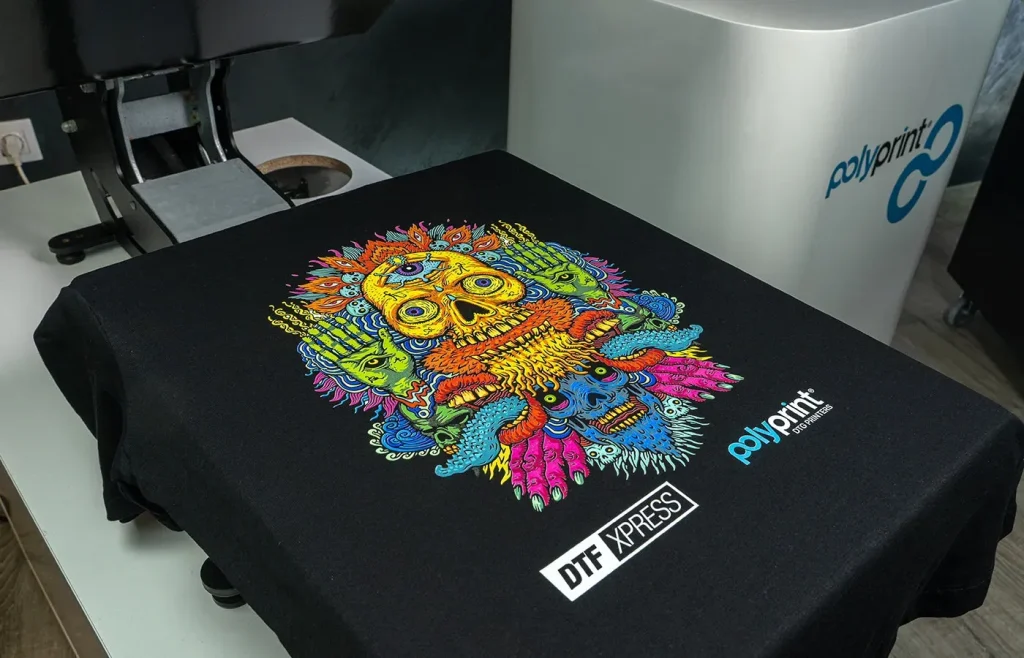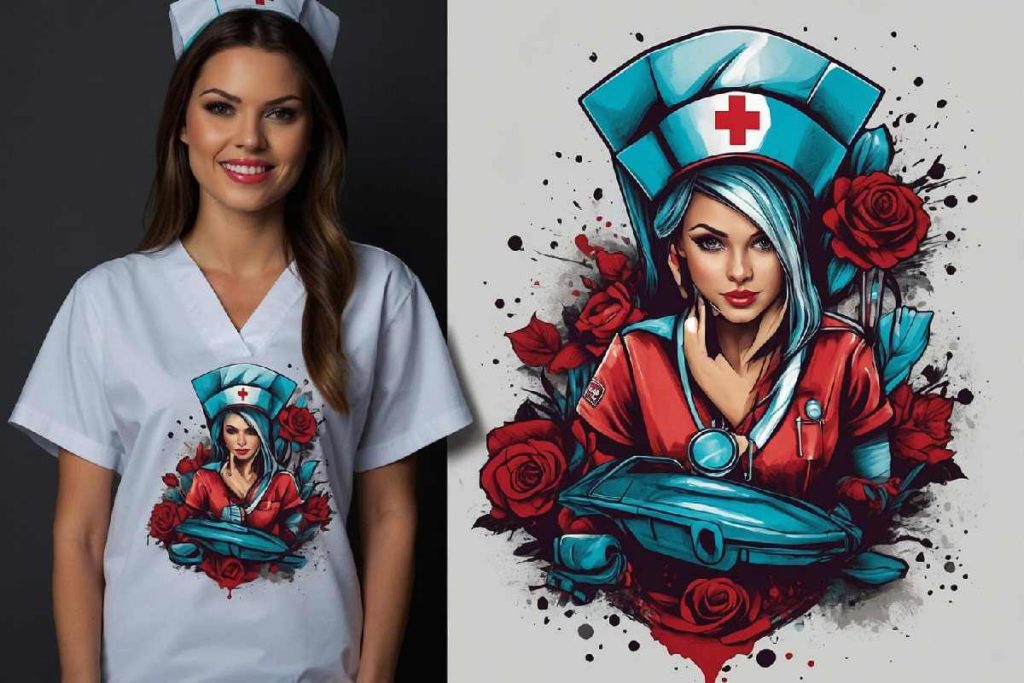DTF printing, short for Direct to Film printing, is a groundbreaking method revolutionizing the textile industry with its ability to create vibrant, full-color designs on a variety of fabrics. This innovative technique involves printing intricate designs onto a special film before transferring them onto clothing with the application of heat and pressure. Thanks to its versatility and impressive quality, DTF technology has quickly become a favored choice among apparel manufacturers seeking to meet the demands of a dynamic market. As companies explore the advantages of modern fabric printing techniques, DTF stands out by offering a seamless alternative to traditional methods like DTG (direct-to-garment) printing. Moreover, its potential for sustainable printing methods makes DTF an attractive option for businesses focused on reducing their environmental footprint while providing exceptional products.
Understanding the nuances of Direct to Film technology is essential for anyone involved in modern fabric printing. This advanced printing process leverages a unique film transfer system to apply detailed designs onto garments, which sets it apart from older fabric printing techniques. With its growing popularity, many are comparing the effectiveness of this method against direct-to-garment solutions, leading to discussions about the benefits of DTF versus DTG printing. As the textile industry evolves, the considerations surrounding sustainable practices further heighten the relevance of methods like DTF. By offering quicker setups and a reduced environmental impact, this innovative approach is quickly shaping the future of apparel production.
What is DTF Printing?
Direct to Film (DTF) printing has emerged as a game-changing technique in the textile printing industry, combining technological efficiency with vibrant output. By utilizing a specialized film for printing designs, DTF allows for exceptionally detailed and colorful prints on the fabric. This method is particularly appealing for businesses aiming to deliver high-quality products, as it minimizes the wastage of materials and ensures precise color application, which is crucial for the burgeoning demand in the fashion and apparel sectors.
Unlike traditional methods prevalent in the textile industry, such as screen printing, DTF printing negates the need for extensive pre-treatment processes, making it more accessible for small to medium-sized enterprises. The ability to print on a variety of fabrics—including cotton, polyester, and their blends—also signifies DTF’s remarkable adaptability, thus enabling designers and businesses to cater to diverse consumer preferences.
DTF vs DTG: A Comparison
When comparing DTF to Direct-to-Garment (DTG) printing, several factors highlight the advantages of DTF. DTF printing stands out because it does not require pre-treatment of fabrics, significantly reducing setup times and operational costs. While DTG is celebrated for its high-quality prints, it can be limited by the types of fabric that can be effectively used, whereas DTF boasts greater material versatility, accommodating a broader range of textiles.
Moreover, DTF technology allows for more intricate designs with vibrant colors due to its innovative use of adhesives and inks. In contrast, the DTG process often results in heavier prints that can feel stiffer on apparel. As businesses consider which method to adopt, understanding the nuanced differences between DTF and DTG can inform more strategic decisions regarding equipment investments and production capabilities.
The Sustainable Edge of DTF Printing
Sustainability is a pivotal consideration as the fashion industry increasingly seeks eco-friendly solutions. DTF printing offers notable advantages in this area by employing water-based inks, which have a lower environmental impact compared to the solvent-based inks often used in screen printing. Additionally, the efficiency of the DTF process reduces waste materials, making it a promising choice for businesses committed to sustainable practices.
The reduced energy consumption during DTF printing, coupled with the efficient utilization of raw materials, contributes to a smaller carbon footprint. As consumers become more conscientious of their purchasing choices, businesses that adopt sustainable printing methods like DTF gather a competitive edge in appealing to environmentally-aware customers, further driving demand for their offerings.
Market Trends in DTF Printing
The DTF printing market is witnessing remarkable growth, fueled by evolving consumer demands for customization and shorter product runs. This shift is not only reflected in the rising number of businesses investing in DTF technology but also manifests in the anticipated compound annual growth rate (CAGR) of over 10% for the market. DTF printing’s flexibility to accommodate diverse fabrics and efficient production processes positions it as a preferred choice among apparel businesses looking to modernize their operations.
In an era where personalization and rapid turnaround times are paramount, DTF printing addresses these needs effectively. Its capability to provide high-quality prints in smaller batches enables designers to experiment with various concepts without the risks associated with traditional larger-scale printing methods. As the industry progresses, companies that harness the advantages of DTF technology can expect to stay ahead in a fiercely competitive market.
Innovations in DTF Technology
Continuous innovations in DTF technology enhance both print quality and user experience. Recent advancements in ink formulations and printer designs have led to improved color retention and durability of prints, addressing common concerns regarding longevity. As businesses strive for excellence in print quality, these innovations become crucial, ensuring that the output not only meets but exceeds customer expectations.
Furthermore, technological improvements have streamlined the DTF workflow, reducing the time taken from design to final product. Enhanced efficiency in the printing process allows for faster adaptation to seasonal trends or emerging design concepts, making DTF an ideal choice for dynamic businesses in the fashion industry. Staying abreast of these innovations can help companies refine their printing strategies, ensuring they deliver top-tier products to their clientele.
Future Outlook for DTF Printing
As DTF printing continues to carve its niche in the fabric printing landscape, its future looks promising. With ongoing advancements aimed at enhancing efficiency and sustainability, the DTF technique is evolving rapidly. Experts predict that innovations in machinery and material usage will further solidify DTF’s position as a frontrunner in textile printing, making it increasingly attractive for businesses looking to optimize production costs and improve print quality.
Moreover, as consumer preferences shift towards personalized and sustainable fashion, the demand for DTF printing is expected to rise accordingly. Businesses that invest early in this technology stand to benefit by being pioneers in delivering high-quality, customizable apparel that resonates with the contemporary consumer’s values. Hence, DTF printing is not just a fleeting trend; it represents a critical evolution in the fabric printing industry, poised for significant growth in the coming years.
Frequently Asked Questions
What is DTF printing and how does it work?
DTF printing, or Direct to Film printing, is a method used to transfer vibrant designs onto fabrics. It involves printing an image onto a special PET film, applying a powder adhesive, curing the print, and then heat-pressing it onto the fabric. This process allows for bright colors and detailed images, making it popular in the textile industry.
How does DTF printing compare to DTG printing?
DTF printing and DTG (Direct to Garment) printing differ mainly in their application processes and fabric requirements. DTF requires no pre-treatment of fabrics and can print on a wider variety of materials, which increases its versatility. In contrast, DTG typically requires specialized fabrics and pre-treatment, making DTF a more accessible option for various fabric printing demands.
What are the advantages of DTF printing over traditional screen printing?
DTF printing offers several advantages over traditional screen printing, including lower setup costs, no pre-treatment requirements, and greater fabric compatibility. It also produces softer prints that enhance comfort. Additionally, DTF is more efficient for small runs and custom designs, making it an attractive choice for many businesses.
Is DTF printing considered a sustainable printing method?
Yes, DTF printing is regarded as a sustainable printing method. It uses water-based inks that reduce environmental impact and generates less waste compared to traditional printing techniques. The lower energy consumption of DTF printers further contributes to a reduced carbon footprint, aligning with the growing demand for eco-friendly production practices in the fashion industry.
What materials can be printed using DTF technology?
DTF technology is highly versatile and can be used on a wide range of materials including cotton, polyester, and various blends. This flexibility allows businesses to expand their offerings without needing to invest in multiple printing technologies, making DTF a valuable solution for diverse fabric printing needs.
What is the future outlook for the DTF printing market?
The DTF printing market is projected to experience significant growth, with analysts estimating a compound annual growth rate (CAGR) of over 10%. This growth is driven by increasing demand for customized apparel, short-run printing, and the advantages of DTF technology over traditional methods. Ongoing innovations and improvements in DTF processes are expected to further enhance its market position.
| Key Point | Details |
|---|---|
| Overview of DTF Printing | Innovative textile printing technique for full-color designs on fabrics using heat and pressure. |
| Technology and Process | Utilizes specialized inks, powder adhesive, and a heat-pressing method for vibrant, high-quality prints. |
| Market Growth | CAGR of over 10% as businesses seek customization and short-run printing solutions. |
| Advantages Over Traditional Methods | Lower setup costs, no pre-treatment, and greater fabric compatibility make DTF accessible and versatile. |
| Recent Innovations | Enhanced ink formulations and efficient printers improve quality and durability, sustaining customer satisfaction. |
| Sustainability Considerations | DTF is seen as a greener alternative with reduced waste and energy consumption, aligning with eco-friendly practices. |
Summary
DTF printing is revolutionizing the textile printing industry by offering a modern solution that enhances both the quality and efficiency of printing on fabrics. This innovative technique not only allows for vibrant designs but also supports sustainability efforts through reduced waste and energy consumption. As the demand for customized apparel continues to rise, businesses that adopt DTF technology can benefit significantly from its lower operational costs and wider fabric compatibility. Embracing DTF printing positions brands at the forefront of the market, meeting consumer demands for both quality and sustainability.



